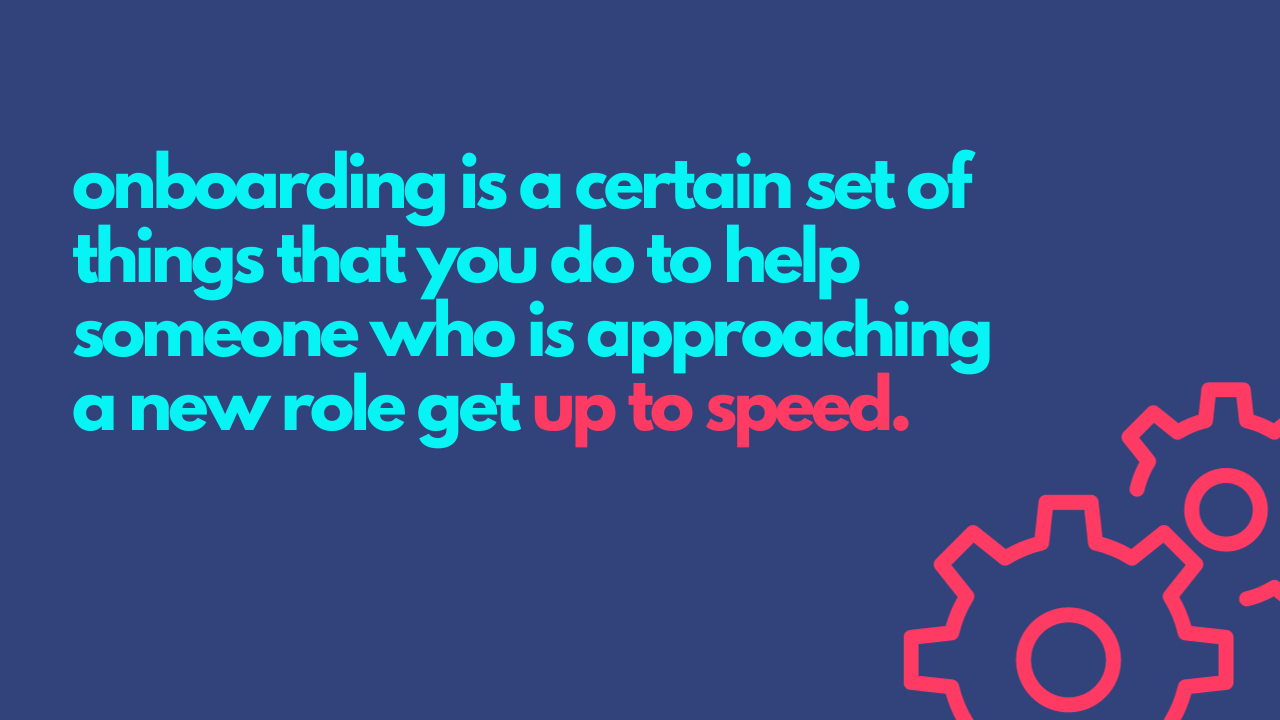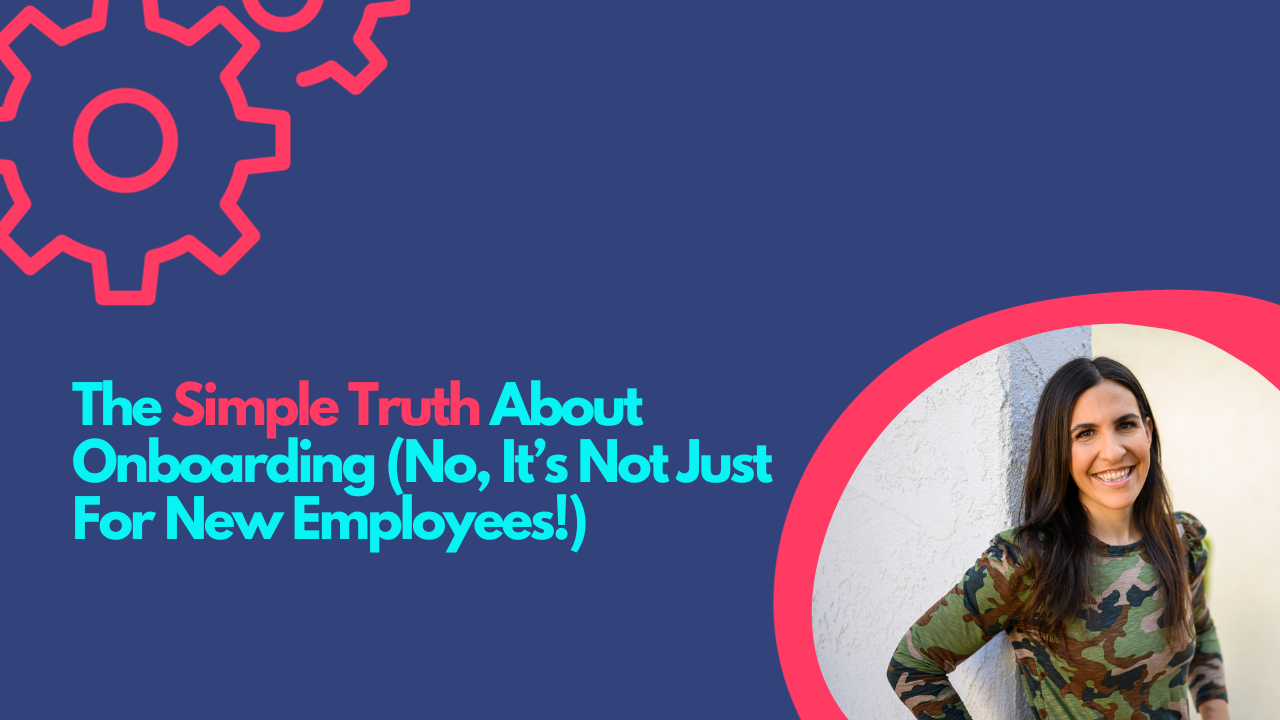Let’s talk about something that can complicate your team operations right from the get-go if not done thoughtfully: onboarding employees.
There are two major misconceptions that come into play when we’re talking about onboarding employees. And the reason it’s so important to debunk them is that when we don’t offer a great onboarding experience, we can actually cause our team members to miss out on the opportunity to hit the ground running and be successful, whether they’re brand-new to the team or experiencing a role change.
Listen on Apple | Listen on Google | Listen on Spotify
What is Onboarding?
If you’re not familiar with the term, “onboarding” is a certain set of things that you do to help someone that is approaching a new role get up to speed.
When you onboard someone onto your team or a new role within it, it’s about helping them learn the ropes. You want to walk them through everything they need to know about the company or team; for instance, you want to walk them through the company’s priorities and the requirements of their job, clarify working norms and expectations, and explain how the team comes together to create success.
If we can approach onboarding employees with care, we can ensure someone feels that they are totally ingrained in the company or team culture by the end. They’ll understand what success looks like, how to be the most effective in their role, and what the expectations of them are in the first thirty, sixty, or even ninety days.
However, if we don’t do onboarding thoughtfully, that employee can end up floundering instead. They won’t really know what they’re supposed to be doing or what’s expected of them. They’ll be stuck waiting for someone to tell them what to do.
That second option is actually a pretty common occurrence with onboarding employees. When we first start out at a company, our manager’s often busy or not there. Everyone’s underwater. No one can really show us the ropes. We don’t know anybody, so we don’t feel comfortable asking questions.
So instead, we end up sitting and waiting, hoping someone will notice we have no idea what we’re doing.
Now, this person that’s just sitting and waiting is probably already getting paid. In most cases, they’re not on commission. So every day that goes by, they’re actually costing you money without getting any work done.
Not only that but not onboarding employees properly is probably costing them their excitement for the job.
We’re never more excited and driven than when we first start at a new company. Most new employees come in really eager to be there, excited to show off their skills, and ready to create some major impact for your team.
But when we don’t commit to onboarding employees…when we don’t show them how to be successful, teach them about the company they’ve just joined, and don’t spend that time getting them up to speed right away…that excitement will start to deflate.
Think of your new employee as a shiny new balloon. Their excitement is the helium keeping them afloat…but there’s a slow leak in the balloon. And if we don’t get in there right away and patch the leak with intentional onboarding, that balloon is going to wither, shrinking and shrinking until it can’t even get off the ground.
Not only does this douse your new employee’s passion for their new role, but it can make your other team members stop and say, “You know what? This company does kind of suck. What are we doing here?”
Nobody wants to have to dodge around a deflated balloon on the floor while they’re busy trying to get their own job done. When one team member is out of the loop, it can throw everyone off—so choosing not to work through onboarding employees can knot up your team operations in a snap.
Onboarding Is NOT Just For New Employees!
The first misconception I want to talk about is the idea that onboarding employees is only needed when they’re new employees.
When we believe this, we don’t work on onboarding employees when their jobs change and this can make transitions twice as difficult for everyone.
For instance, if I was an administrative assistant on a team and I then became a project manager, that’s still a new role. Even if someone isn’t joining your team from scratch, they still need help orienting to the new responsibilities and expectations for their new role.
Instead of thinking, “Okay, we’re only going to go through onboarding employees when they’re new,” we need to see every shift or transition as an opportunity to re-onboard.
When we don’t re-onboard someone who’s changing their role, they often get caught in between their old role and their new one. They’re still thinking about their old job. Sometimes people are even still asking them to complete tasks from that previous job, and it’s really hard for that person to set the boundary and remind everyone those things are not part of their job anymore.
Even if they want to help out, they have the responsibilities of their new position to think about; they don’t have the bandwidth to be doing their old job, as well. But it can create a lot of tension and awkwardness to have to set that boundary on their own.
So as a manager, as a leader, and/or as a business owner, you want to be thinking about the process for re-onboarding current team members into new roles. By having a conversation around the changes in role responsibilities, how you want to have them let go of previous work, and how to mark this transition with the broader team so that folks aren’t coming to them to complete old responsibilities, you can instantly make the transition simple and effective.
By getting everyone on the same page and putting something into place that clearly marks that shift, instead of someone having a leg on either side of the fence and feeling like they’re trapped in a game of tug-of-war, that person can hit the ground running without their old role holding them back.
When we’re being pulled in different directions, we can’t operate at our best. And when we’re promoted or shifted to a new role, we’re needed to complete the new responsibilities, not our old ones; so when we end up stuck trying to do both, it actually costs the rest of the team.

Onboarding is NOT Only For Full-Time Employees
Now, the second misconception that we can run into with onboarding employees is thinking about onboarding as something we only do for full-time employees.
Often, business owners don’t want to put the time into onboarding employees who aren’t going to be there for the long haul.
Why is this a problem? Because whoever is going to be interfacing with our company or team, even if it’s only for a few months—or even a week or two—has to be taught the ropes of the team in order to deliver the results we want.
Everybody has to understand the working norms, what success looks like for you, what your priorities are, and what your expectations are of them. If we don’t walk them through some sort of onboarding, even if it’s a more consolidated or accelerated onboarding experience, then they don’t know what we expect.
They don’t know what success will look like for them and their piece of whatever project we’re working on.
It’s not that they don’t care enough to do their best work because they’re only here temporarily. Every single person, no matter what they’re doing, wants to be successful. They’re working with your business because they want to do good work—we have to believe that, or else, what’s the point?
However, they can’t do it without our help. So we want to create the conditions that will allow this person to create the most impact.
I’ve been the manager who skipped onboarding employees that were only working with me temporarily. I have hired someone to work on a project basis and not done that onboarding, and I did not get the results that I was hoping for.
You know whose fault that was? Mine.
The fact is, I didn’t do the onboarding. I didn’t sit down with that person and say, “Hey, I know we’re going to jam on this project for two weeks. Let’s talk about where all the files are, how I like to review things, and when I’d like to see an update. Here are all the brand materials. Here’s how I prefer to be communicated with.”
I didn’t do any of that. And when I didn’t get the results I wanted, that was on me, not the person I hired.
The next time that I hired someone on a project basis, I did it differently. I created an onboarding document and I said, “Hey, here is a little bit about the company, a little bit about my work style, how I like to meet with team members, and where you can find the stuff you need. Let’s check in on Wednesday to make sure we’re all on the same page. I’d love to get an update Friday on where things are at.”
This person was only going to be working with me for three weeks. But I wrote all the onboarding information up. She asked some questions. I answered them. We checked in on Wednesday. We worked through it. Friday, she sent me that status email I needed, and it was such a different experience.
By treating them like a full-time team member and getting them up to speed the same way, I received full-time team member output from them, too. The quality of the work was better. I was able to get what I wanted without a bunch of turns and iterations, so the results came faster.
That one onboarding document provided huge savings of time and money…and stress! I could go back to focusing on what I wanted to do instead of worrying about whether they were going to get this project right.
The Simplifying Power of Onboarding
This is why onboarding employees is the first area we dive into in my Ops Playbook. When we put together a process to make sure that people new to our teams or new to their roles can hit the ground running, all these transitions go from being chaotic and complicated to smooth and simple.
It can feel like a lot of work up front, but it’s really just about laying out your expectations clearly and ensuring everyone has the tools they need to succeed on your team. And when you commit to onboarding employees with care, you can save yourself so much time, money, and frustration later on!
WORK WITH LIA:
Want a checklist of things you can do THIS month to become a better manager? Check out my Thriving Team Scorecard for a list of quick actions you can take right away with your team: liagarvin.com/scorecard
Book a FREE scaling strategy consultation with yours truly: calendly.com/liagarvin/scaleup-strategy?back=1&month=2023-08
Join the MANAGING MADE SIMPLE HUB, a membership community for team leaders and small business owners. This is your one-stop shop for building effective, motivated, & profitable teams: https://www.liagarvin.com/hub
CONNECT WITH LIA:
Website: https://www.liagarvin.com/
Instagram: https://www.instagram.com/lia.garvin/




